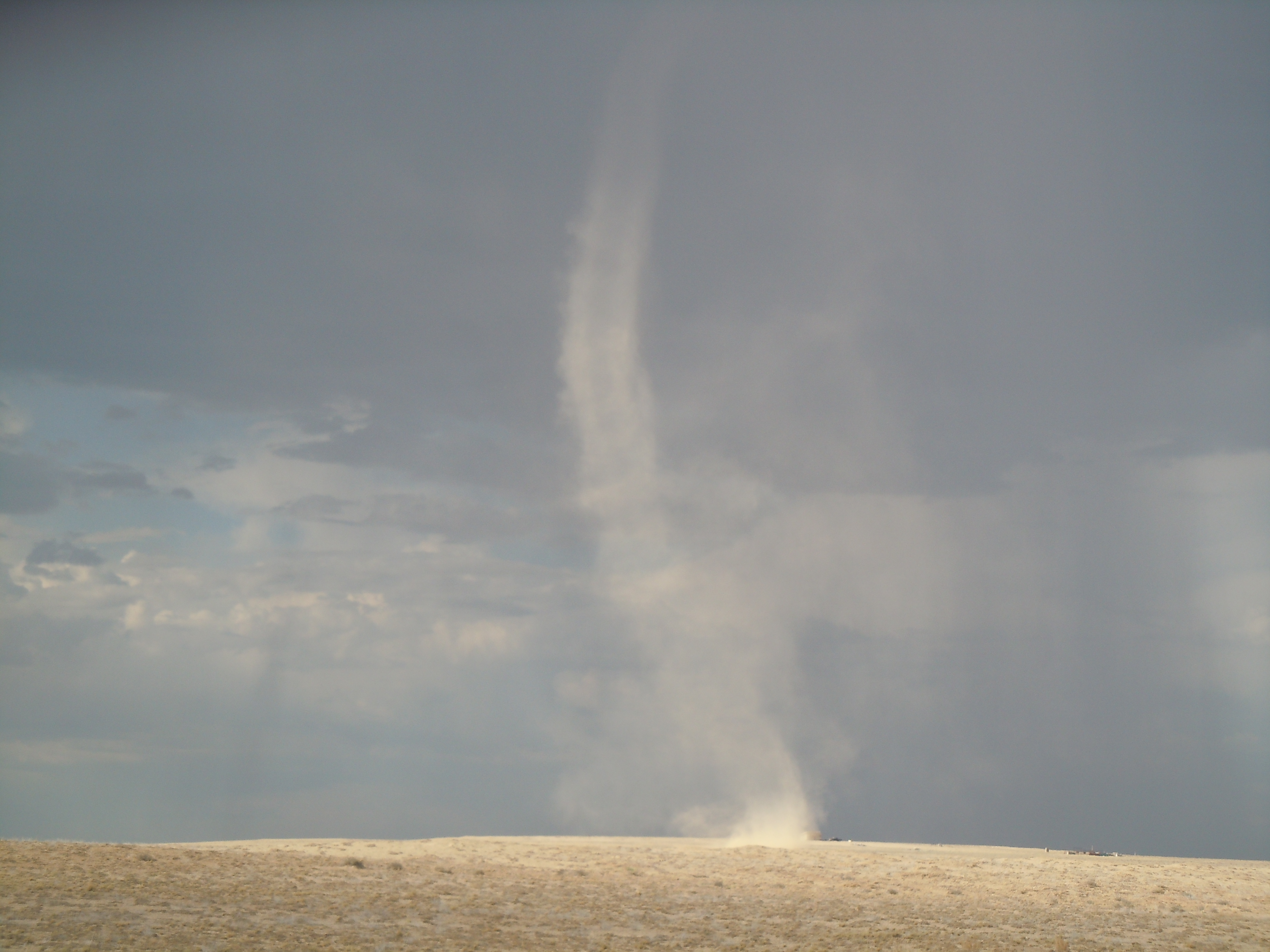
Research

Southwestern Dustiness
Windblown dust impacts air quality, human health, mountain snowpack, and water resources. In southwestern North America (Southwest) dust transports valley fever, compromises visibility, and reduces mountain runoff through dust’s influence on snow-albedo, snowmelt rates, and sublimation. Warm temperatures and drought have been linked with vegetation mortality and enhancing dust emissions from the Colorado Plateau, and the Southwest has been warming at a dramatic rate in recent decades and has been drying significantly since the late 1990s. Warming and drying trends are expected to continue with projected increases in temperature, decreases in precipitation, and increases in consecutive dry days. Nonetheless, the implications of these warming and drying trends for future dustiness, and feedbacks between dust and drought, have been poorly characterized.
A primary limitation in understanding warm-drought dust feedbacks is a lack of observations under natural conditions. Dustiness increased dramatically with human land use and the introduction of livestock in the late 1800s. Although livestock numbers have declined significantly, grazing, mining, off-highway vehicles, and agriculture are still important dust producers.
We are working to reconstruct past dust conditions over the past several thousand years in southern Colorado to characterize the baseline and natural variability of dustiness from Southwestern deserts. We have developed a ~3000-year- long dust reconstruction from the southern San Juan Mountains, which shows that dust emissions increased during prehistoric droughts during the Medieval Period (~800-1,500 yr BP; Routson et al., 2016): the most recent period of prolonged warming and drying in the Southwest. We are also working to develop a set of Holocene-length (~10,000 yr-long) dust records to understand how dust emissions changed during the mid-Holocene. Dustiness during the Mid-Holocene (~5,000-8,000 yr BP), when the North American mid-latitudes were both persistently warmer and drier that today, will help us understand how dustiness might respond to current warming and drying trends.
Routson, C. C., J. T. Overpeck, C. A. Woodhouse, and W. F. Kenney (2016), Three Millennia of Southwestern North American Dustiness and Future Implications, PLOS ONE, 11(2), e0149573, doi:10.1371/journal.pone.0149573.
Tree-rings
Having graduated from the Laboratory of Tree-Ring Research and the University of Arizona, I have a strong appreciation for the power of tree-rings to characterize past environments. In 2011, we published an article using bristlecone pine (Pinus aristata) wood from the headwaters region of the Rio Grande River, Colorado to evaluate periods of unusually severe drought over the past two millennia (Routson et al., 2011). The record highlighted a period of multi-century drought between 1 and 400 A.D., including an extremely severe drought event during the 2nd century. The drought was characterized by almost five consecutive decades of below average tree-growth. This drought was likely the most persistent and severe event of the past two millennia in many parts of the Southwest, and characterizes the “worst-case scenario” from a water resources management perspective.
I also collaborated with my brother and Paul Shepard to use tree- rings to establish the planting dates of historic orchards in the Southwest (Routson et al., 2012). Throughout higher elevations of the Southwest, remnant historic orchards persist as vestiges of agricultural endeavors in the region. For many of these orchards, the planting dates, cultivars grown, and the histories of the farmers who planted them were never recorded. Historic trees however, provide an extant, living record of homestead agriculture through genetic lineages and environmental influences recorded in annual growth rings.

Figure from Routson et al., 2011. Bristlecone pine from the southern Rocky Mountains record an extreme and persistent dry interval centered on the second century, CE.
Routson, C.C., Woodhouse, C.A., Overpeck, J.T., 2011. Second century megadrought in the Rio Grande headwaters, Colorado: How unusual was medieval drought? Geophys. Res. Lett. 38, L22703. doi:10.1029/2011GL050015
Routson, K. J., Routson, C. C., Sheppard, P. (2012). Dendrochronology reveals planting dates of historic apple trees in the southwestern United States. Journal of the American Pomological Society, 66(1), 9-15
Data synthesis
Decades of paleoclimate record development combined with open access to data and data sharing have enabled profound advances in our understanding of the climate system including processes as fundamental as human induced climate change. Combining the available data enables climate scientists to address regional to global scale questions, such as potential causes of drought in western North America.

Figure from Routson et al., 2016. Proxy SST anomaly maps. SST anomalies during (a) the medieval period, (b) the post medieval period. Panels (c–d) show SST anomalies during persistent drought and pluvial events in WNA. Drought and pluvial events are defined by the smoothed series in Fig. 3. Proxy SST anomalies are computed with respect to the 900–2000 AD mean, or the series length mean if shorter than the analysis period.
Routson, C. C., Woodhouse, C. A., Overpeck, J. T., Betancourt, J. L., & McKay, N. P. (2016). Teleconnected ocean forcing of Western North American droughts and pluvials during the last millennium. Quaternary Science Reviews, 146, 238-250.
PAGES2k Consortium (Routson one of 114 contributing authors). (submitted) A global multiproxy database for temperature reconstructions of the Common Era. Manuscript in review at Nature Scientific Data.
Kaufman, D.S., Axford, Y.L., Henderson, A.C.G., McKay, N.P., Oswald, W.W., Saenger, C., Anderson, R.S., Bailey, H.L., Clegg, B., Gajewski, K., Hu, F.S., Jones, M.C., Massa, C.,Routson, C. C., Werner, A., Wooller, M.J., Yu, Z., 2016. Holocene climate changes in eastern Beringia (NW North America) – A systematic review of multi-proxy evidence. Quaternary Science Reviews, Special Issue: PAST Gateways (Palaeo-Arctic Spatial and Temporal Gateways) 147, 312–339. doi:10.1016/j.quascirev.2015.10.021
Briner, J.P., McKay, N.P., Axford, Y., Bennike, O., Bradley, R.S., de Vernal, A., Fisher, D., Francus, P., Fréchette, B., Gajewski, K., Jennings, A., Kaufman, D.S., Miller, G., Routson, C. C., Wagner, B., 2016. Holocene climate change in Arctic Canada and Greenland. Quaternary Science Reviews, Special Issue: PAST Gateways (Palaeo- Arctic Spatial and Temporal Gateways) 147, 340–364. doi:10.1016/j.quascirev.2016.02.010
